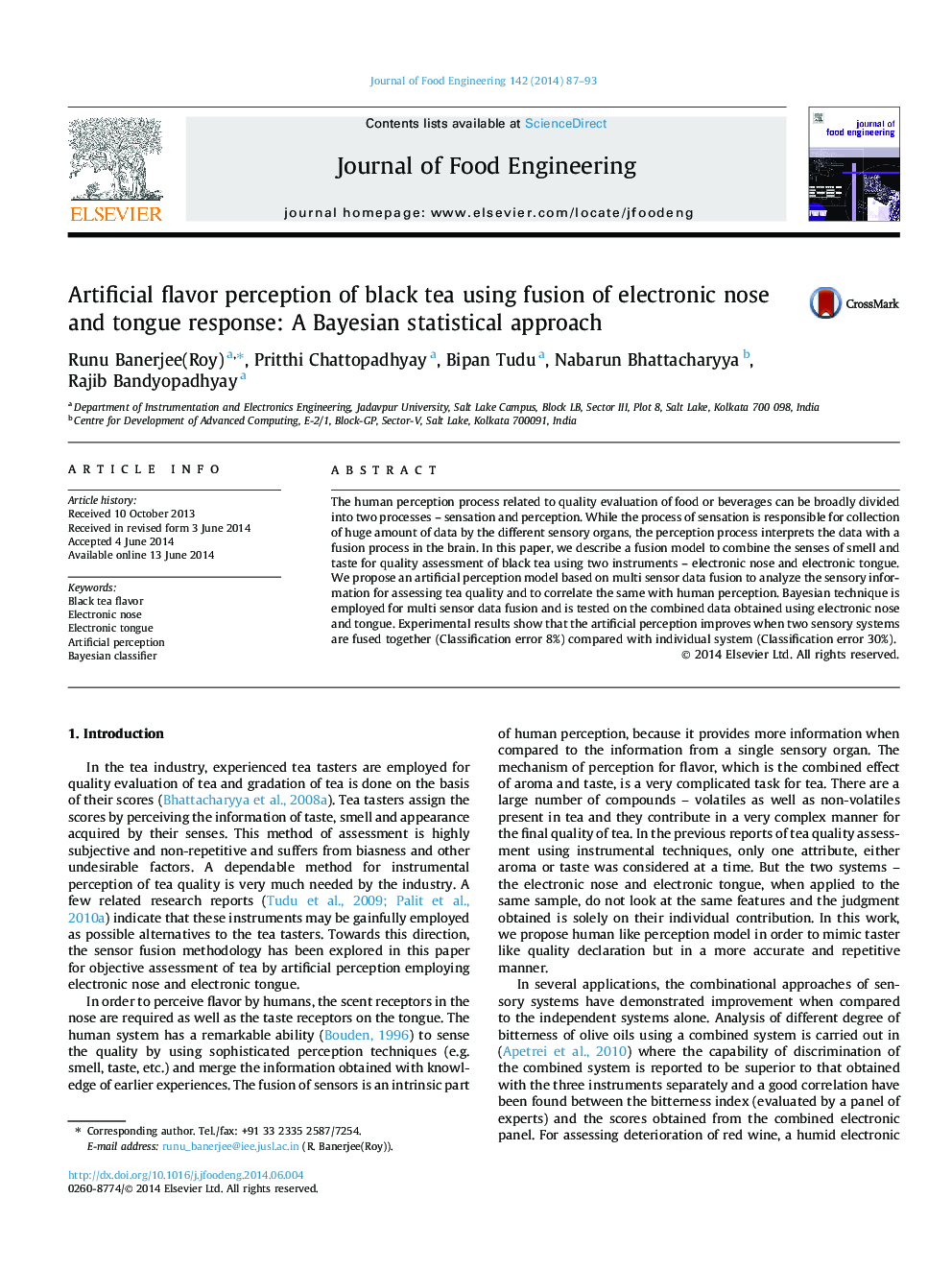| Article ID | Journal | Published Year | Pages | File Type |
|---|---|---|---|---|
| 223091 | Journal of Food Engineering | 2014 | 7 Pages |
•Artificial flavor perception of tea is proposed considering two important attributes – aroma and taste.•Aroma and taste features are measured using electronic nose and tongue.•Bayesian decision theory is employed to fuse the nose and tongue data.•For combined information, over all classification error reduces than the individual sensor system.
The human perception process related to quality evaluation of food or beverages can be broadly divided into two processes – sensation and perception. While the process of sensation is responsible for collection of huge amount of data by the different sensory organs, the perception process interprets the data with a fusion process in the brain. In this paper, we describe a fusion model to combine the senses of smell and taste for quality assessment of black tea using two instruments – electronic nose and electronic tongue. We propose an artificial perception model based on multi sensor data fusion to analyze the sensory information for assessing tea quality and to correlate the same with human perception. Bayesian technique is employed for multi sensor data fusion and is tested on the combined data obtained using electronic nose and tongue. Experimental results show that the artificial perception improves when two sensory systems are fused together (Classification error 8%) compared with individual system (Classification error 30%).
